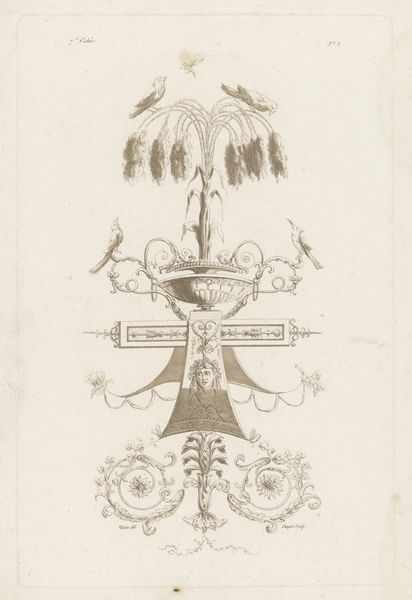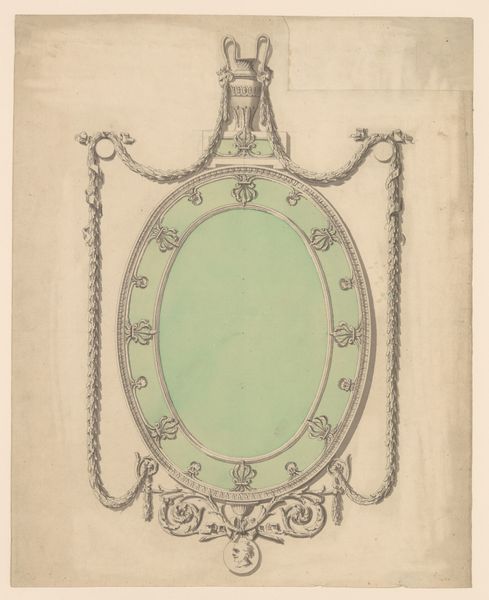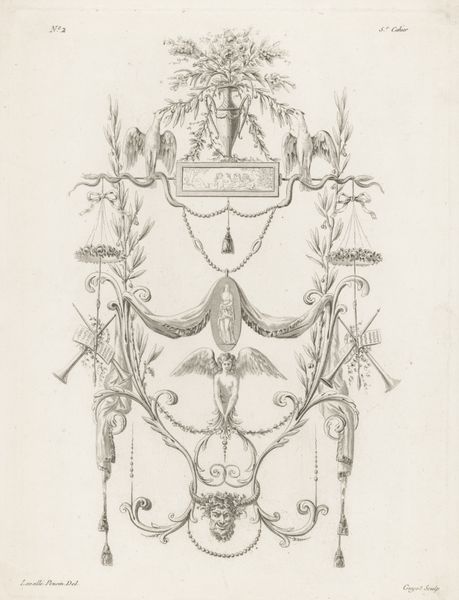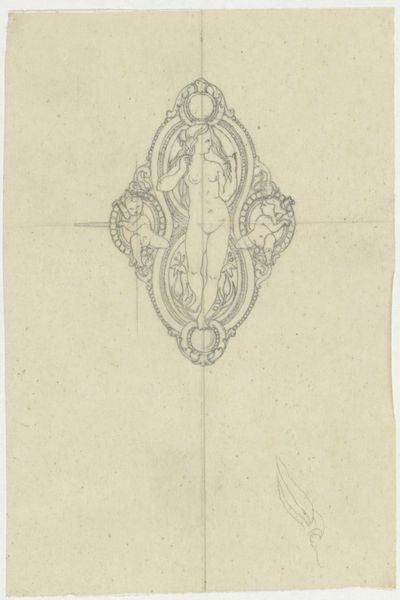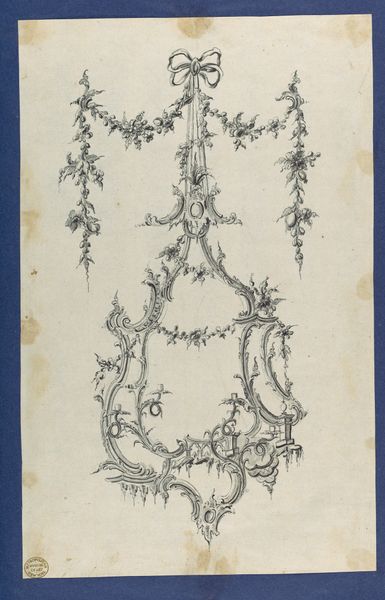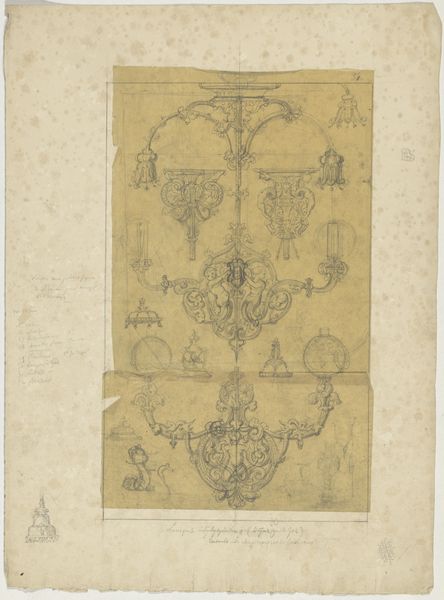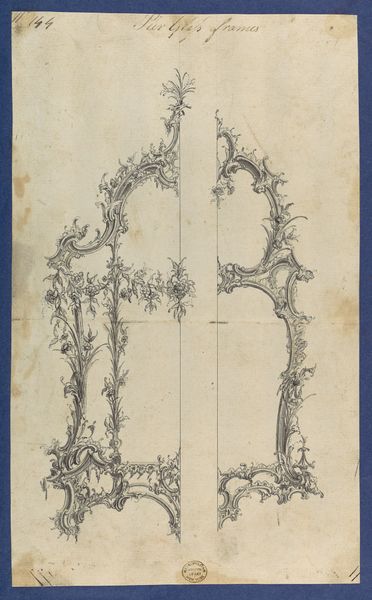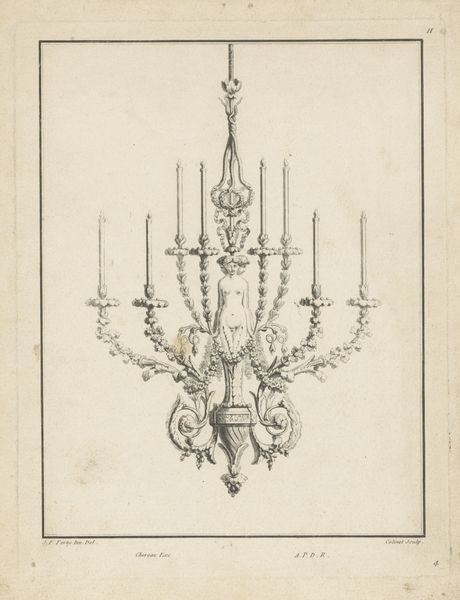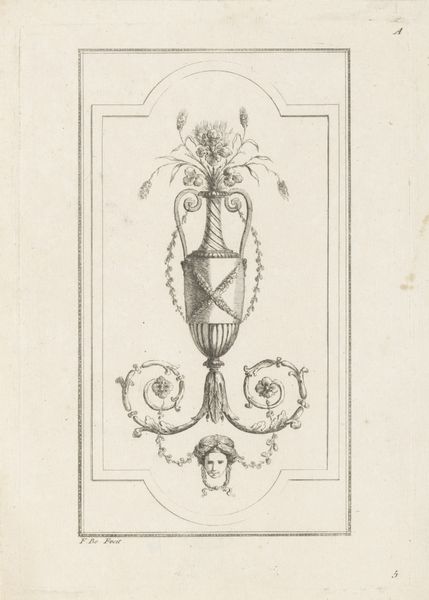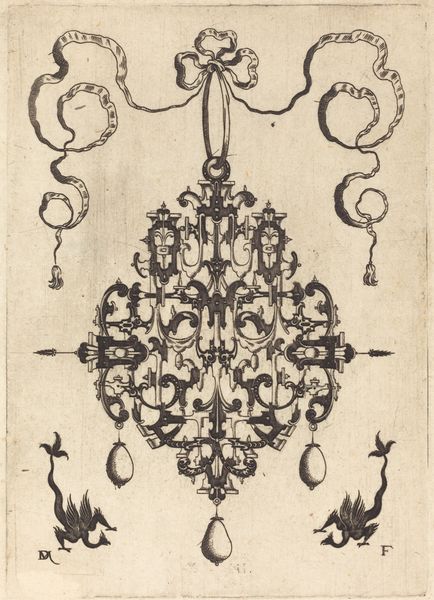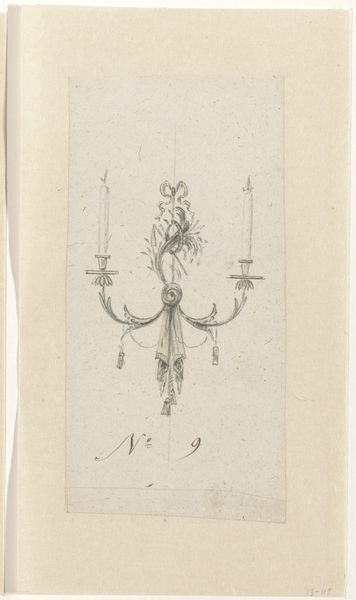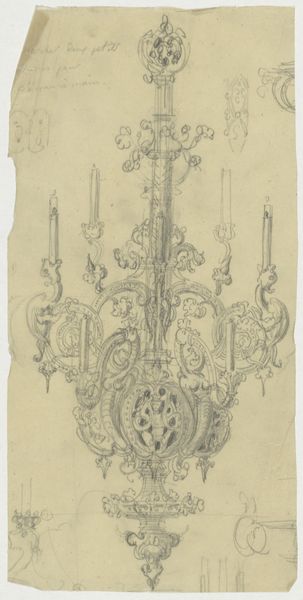
Two Designs for an Overmantel Glass (Verso: Partial Floor plan) 1743 - 1796
0:00
0:00
drawing, print, paper, pen
#
drawing
#
neoclacissism
# print
#
paper
#
geometric
#
pen
#
decorative-art
Dimensions: sheet: 22 3/4 x 14 5/8 in. (57.8 x 37.1 cm)
Copyright: Public Domain
Curator: What we're looking at is a design by Sir William Chambers, dating sometime between 1743 and 1796. It's called "Two Designs for an Overmantel Glass" and features pen and print on paper. Found at the Met, in New York. Editor: Oh, the formality! I'm immediately struck by this drawing's stark elegance, almost ghostly in its precise lines. It's like looking at a meticulously planned party, where every floral swag and candle is placed just so. But for whom? And why does it feel so...reserved? Curator: Right, the reserve is palpable. Chambers was, after all, deeply influenced by Neoclassicism, an artistic and cultural movement that consciously drew upon classical art and culture to produce order. Editor: Yes, order! That's it. This isn't just decorative; it's ideological. Look at the geometric precision, the symmetry. It’s as if Chambers is trying to impose reason and control onto the wildness of, say, a Rococo mirror frame. Where is all the exuberant asymmetry of the time! Curator: Exactly! Think about what an overmantel glass signifies: self-reflection, presentation to the world. This design suggests a carefully curated image, one where status and decorum take center stage. And he creates an interior that reflected enlightened, rational ideals... or tried to! Editor: That's a little sinister to me. To attempt this radical controlling and ordering with lines and shapes is somehow indicative of the future’s power structures to come. It’s fascinating how seemingly innocuous design elements can reveal the larger cultural anxieties and aspirations. The mirror becomes less about seeing yourself and more about conforming to a certain standard of…excellence? Curator: Well put. What stays with me is the sheer labor involved. Each tendril, each bead meticulously rendered, points toward an aspirational world of effortless refinement that obviously wasn’t effortless at all. Perhaps it is simply about showing what immense wealth and time allows. Editor: So, an artwork about controlled images, created through endless labor, still makes us reflect and challenges us with every symmetrical curve… Pretty good design after all.
Comments
No comments
Be the first to comment and join the conversation on the ultimate creative platform.
